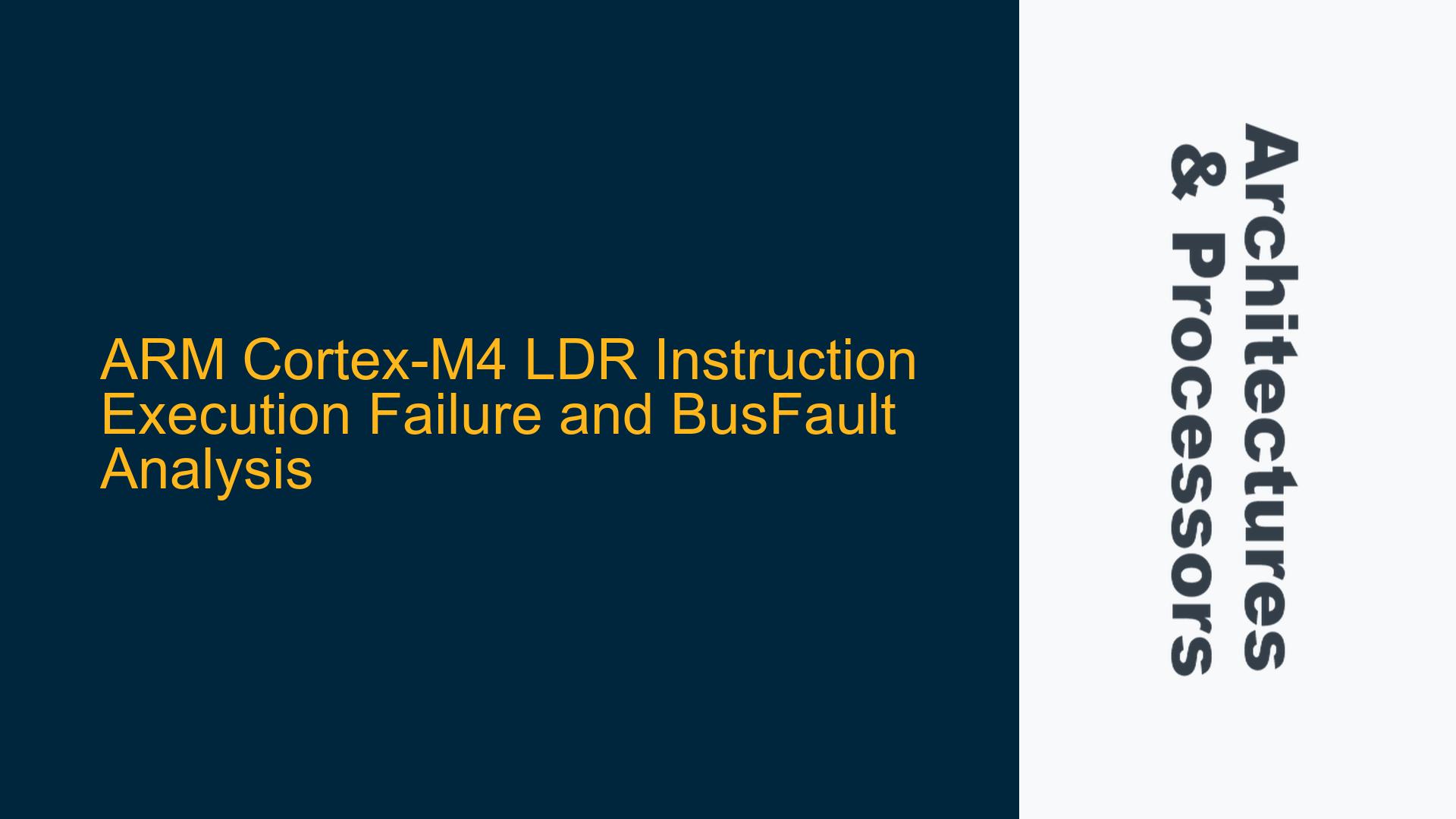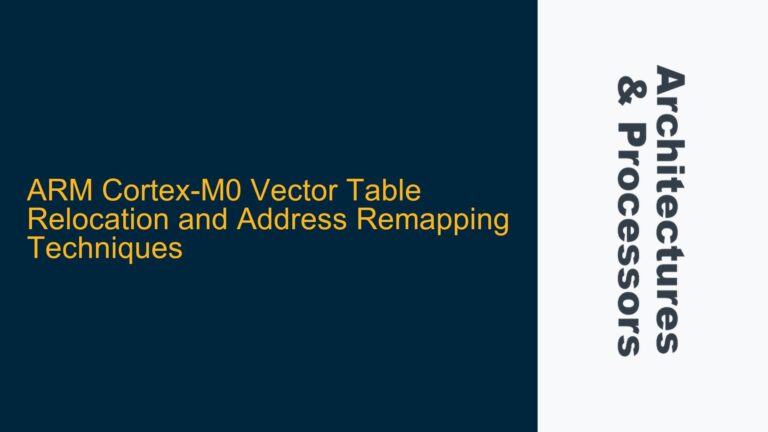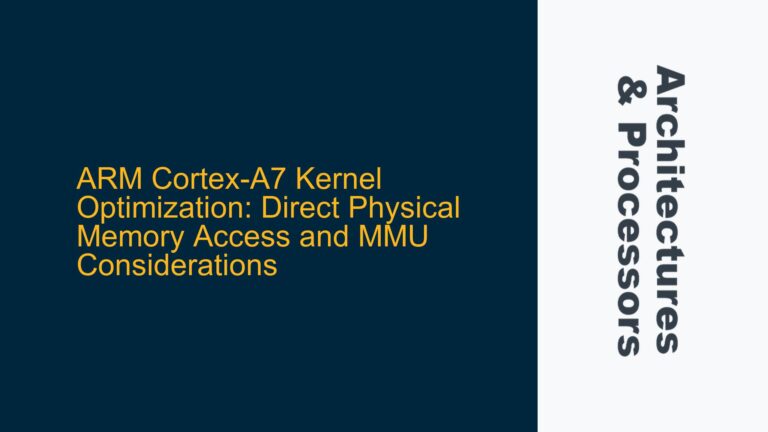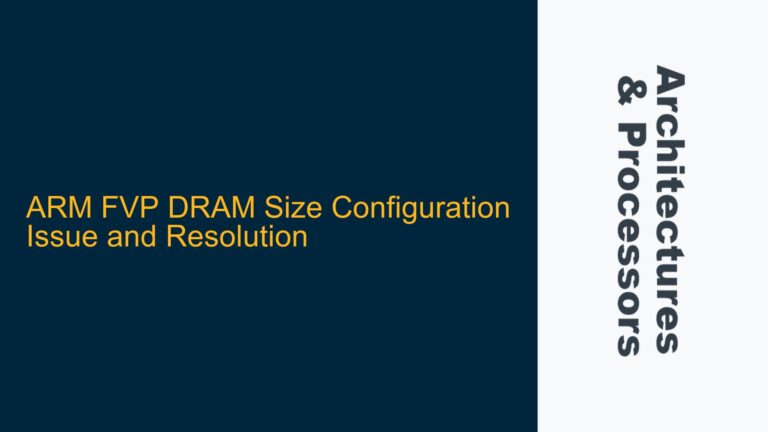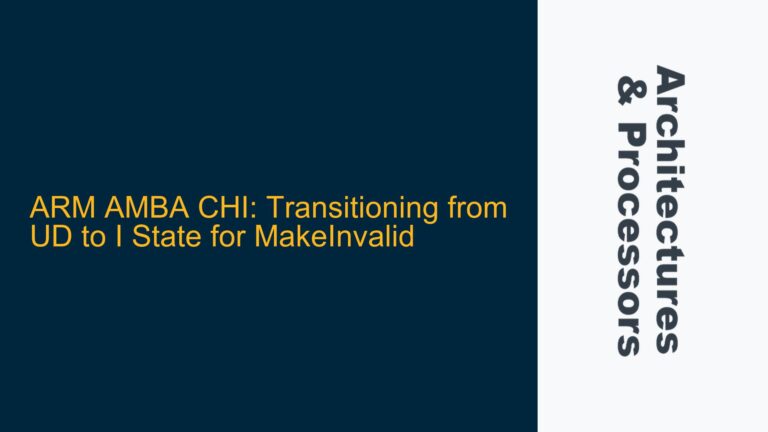ARM Cortex-M4 LDR Instruction Execution Failure Leading to BusFault
The core issue revolves around an ARM Cortex-M4 processor experiencing a BusFault during USB communications, specifically when executing an LDR (Load Register) instruction. The fault occurs at address 0x0040 0008, which is derived from the value in register R2 (0x0040 0000) with an offset of 8. The perplexing aspect is that R2 should have been loaded with the value 0x2000 FF48 from the address stored in R7, but instead, it retains the value 0x0040 0000, suggesting that the LDR instruction did not execute as expected. This issue is observed in the context of a USB interrupt handler on an MK24FN1M0VDC12 microcontroller, which is part of the Kinetis K24 family.
The fault manifests as a hard fault, and the debugger indicates that the instruction causing the fault is at address 0x9340. The call stack and disassembly window suggest that the LDR instruction at PC 0x933E, which should load R2 from the address in R7, is either not executing or is being bypassed. This behavior is inconsistent with the expected operation of the ARM Cortex-M4 pipeline and memory access mechanisms.
Memory Access Timing, Cache Coherency, and Clock Speed Implications
The root cause of the LDR instruction execution failure and subsequent BusFault can be attributed to several interrelated factors, including memory access timing issues, cache coherency problems, and clock speed mismatches. These factors are particularly relevant in the context of the ARM Cortex-M4 architecture, which features a Harvard architecture with separate instruction and data buses, as well as optional cache and prefetch units.
Memory Access Timing Issues
The ARM Cortex-M4 processor relies on precise timing for memory accesses, especially when dealing with peripherals like USB controllers. The USB interrupt handler must access memory-mapped registers and buffers within strict timing constraints. If the memory access timing is not aligned with the processor’s clock cycles, it can lead to incorrect data being read or written, resulting in a BusFault. In this case, the LDR instruction at PC 0x933E is expected to load R2 with the value from the address in R7, but the timing mismatch causes the instruction to fail, leaving R2 with its previous value (0x0040 0000).
Cache Coherency Problems
The ARM Cortex-M4 processor may utilize instruction and data caches to improve performance. However, improper handling of cache coherency can lead to inconsistencies between the cached data and the actual memory contents. If the cache is not properly invalidated or flushed before critical memory accesses, the processor may execute stale or incorrect instructions, leading to unexpected behavior. In this scenario, the LDR instruction may be fetching data from an outdated cache line, causing the incorrect value to be loaded into R2.
Clock Speed Mismatches
The clock speed of the processor and the peripheral buses must be carefully balanced to ensure reliable operation. In this case, reducing the MCU’s clock speed from 120 MHz to 96 MHz resolved some of the hard faults. This suggests that the original clock speed was causing timing issues, particularly with flash memory accesses. The flash memory on the MK24FN1M0VDC12 microcontroller operates at a fraction of the core clock speed (e.g., 96/5 = 19.2 MHz). If the core clock speed is too high, the flash memory may not be able to keep up with the processor’s demands, leading to read errors and BusFaults.
Implementing Cache Management, Memory Barrier Instructions, and Clock Speed Optimization
To address the LDR instruction execution failure and BusFault issues, a comprehensive approach involving cache management, memory barrier instructions, and clock speed optimization is required. These steps ensure that the processor’s memory accesses are synchronized, the cache is properly managed, and the clock speed is optimized for reliable operation.
Cache Management
Proper cache management is essential to prevent cache coherency issues that can lead to incorrect instruction execution. The following steps should be taken to ensure cache coherency:
-
Disable Instruction and Data Caching: As a temporary measure, disabling both instruction and data caching can help isolate the issue. This ensures that all memory accesses are performed directly from the main memory, eliminating any potential cache-related inconsistencies. In the case of the MK24FN1M0VDC12 microcontroller, disabling caching and prefetching resolved the initial hard fault.
-
Cache Invalidation and Flushing: Before executing critical sections of code, such as the USB interrupt handler, the cache should be invalidated and flushed. This ensures that the processor fetches the latest data from memory, rather than relying on potentially stale cache lines. The ARM Cortex-M4 provides instructions for cache management, such as the Data Synchronization Barrier (DSB) and Instruction Synchronization Barrier (ISB) instructions, which can be used to ensure that all memory accesses are completed before proceeding.
-
Cache Configuration: If caching is required for performance reasons, the cache configuration should be carefully reviewed. The cache should be configured to match the memory access patterns of the application, with appropriate cache line sizes and replacement policies. Additionally, the cache should be periodically invalidated and flushed to maintain coherency.
Memory Barrier Instructions
Memory barrier instructions are crucial for ensuring that memory accesses are performed in the correct order, especially in a multi-threaded or interrupt-driven environment. The ARM Cortex-M4 provides several memory barrier instructions, including the Data Memory Barrier (DMB), Data Synchronization Barrier (DSB), and Instruction Synchronization Barrier (ISB). These instructions can be used to enforce memory access ordering and synchronization.
-
Data Memory Barrier (DMB): The DMB instruction ensures that all memory accesses before the barrier are completed before any memory accesses after the barrier. This is particularly important when dealing with shared memory regions, such as USB buffers, where multiple threads or interrupts may be accessing the same memory locations.
-
Data Synchronization Barrier (DSB): The DSB instruction ensures that all memory accesses before the barrier are completed before any subsequent instructions are executed. This is useful for ensuring that memory-mapped peripheral registers are properly updated before proceeding with further operations.
-
Instruction Synchronization Barrier (ISB): The ISB instruction ensures that all instructions before the barrier are completed before any subsequent instructions are executed. This is particularly important when modifying the program flow, such as when enabling or disabling interrupts.
Clock Speed Optimization
The clock speed of the processor and peripheral buses must be carefully balanced to ensure reliable operation. The following steps should be taken to optimize the clock speed:
-
Reduce Core Clock Speed: Reducing the core clock speed can help alleviate timing issues, particularly with flash memory accesses. In the case of the MK24FN1M0VDC12 microcontroller, reducing the clock speed from 120 MHz to 96 MHz resolved some of the hard faults. This suggests that the original clock speed was causing timing issues, particularly with flash memory accesses.
-
Flash Memory Timing Configuration: The flash memory on the MK24FN1M0VDC12 microcontroller operates at a fraction of the core clock speed (e.g., 96/5 = 19.2 MHz). The flash memory timing configuration should be reviewed to ensure that it is optimized for the selected clock speed. This may involve adjusting the wait states or other timing parameters to ensure reliable flash memory accesses.
-
Peripheral Clock Configuration: The clock speed of the peripheral buses, such as the USB controller, should also be reviewed. The peripheral clock speed should be balanced with the core clock speed to ensure that the peripherals can keep up with the processor’s demands. This may involve adjusting the clock dividers or other timing parameters to ensure reliable peripheral operation.
Code Optimization and Compiler Settings
In addition to hardware-level optimizations, the code and compiler settings should be reviewed to ensure that they are optimized for the target hardware. The following steps should be taken:
-
Compiler Warnings: All compiler warnings should be addressed to ensure that the code is free of potential issues. In the case of the USB_drv.c file, there were several warnings that needed to be resolved. Addressing these warnings can help identify potential issues in the code that may be contributing to the BusFault.
-
Optimization Levels: The optimization level of the compiler should be carefully selected. In this case, enabling optimizations (O1-O3) caused the faults to become more random and occur more frequently. This suggests that the optimizations may be introducing timing issues or other inconsistencies. The optimization level should be adjusted to balance performance and reliability.
-
Code Review: The code should be reviewed for potential issues, such as uninitialized variables, incorrect pointer arithmetic, or other common programming errors. In the case of the USB_drv.c file, there was an expression "if (ptrUSB_HW > 0x200)" that might not compile without warning. This expression should be reviewed and corrected to ensure that it is valid and does not introduce any potential issues.
Debugging and Verification
Finally, thorough debugging and verification are essential to ensure that the issues have been resolved. The following steps should be taken:
-
Debugger Configuration: The debugger should be configured to accurately reflect the state of the processor and memory. This includes enabling the disassembler window to show raw bytes alongside the instructions and verifying that the memory window accurately reflects the contents of RAM. This helps ensure that the debugger is providing an accurate representation of the code and memory state.
-
Step-by-Step Execution: The code should be executed step-by-step in the debugger to verify that each instruction is executing as expected. This includes verifying that the LDR instruction at PC 0x933E is correctly loading R2 with the value from the address in R7. Any discrepancies should be investigated and resolved.
-
Stress Testing: The system should be subjected to stress testing to ensure that it can handle the expected workload without experiencing hard faults. This includes running the USB communications at full speed and verifying that the system remains stable under load.
Conclusion
The LDR instruction execution failure and BusFault issues on the ARM Cortex-M4 processor are complex and multifaceted, involving memory access timing, cache coherency, clock speed optimization, and code quality. By implementing a comprehensive approach that includes cache management, memory barrier instructions, clock speed optimization, and thorough debugging, these issues can be resolved, ensuring reliable operation of the microcontroller in USB communications and other critical tasks.
